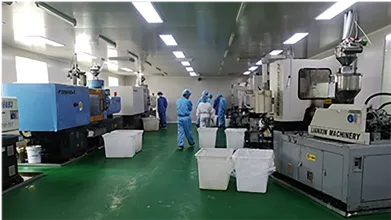https://www.wahmg.com/)">
Exploring the Applications and Importance of Petri Dishes in Modern Microbiology and Research
Exploring the Applications and Importance of Petri Dishes in Modern Microbiology and Research
The Use of Petri Dishes in Microbiology
Petri dishes, also known as Petri plates, are a staple in the field of microbiology and cellular biology. Named after the German bacteriologist Julius Richard Petri, who invented them in the late 19th century, these shallow, flat, circular dishes made of glass or clear plastic have revolutionized the way scientists study microbial life. Their design allows for the cultivation of various microorganisms, including bacteria, fungi, and algae, under controlled laboratory conditions.
The Use of Petri Dishes in Microbiology
The process of culturing microorganisms in Petri dishes begins with inoculation, where a sample containing the desired microorganisms is introduced onto the agar surface. This can be accomplished using sterile tools like inoculating loops or swabs. Once inoculated, the dishes are incubated at appropriate temperatures to promote growth. Over time, colonies form, each representing the growth of individual microorganisms. Researchers can then analyze these colonies for their size, shape, color, and other distinguishing features, providing valuable information about their identity and potential pathogenicity.
use of petridish

Petri dishes also play a critical role in antimicrobial susceptibility testing. In this context, they are used to assess the effectiveness of antibiotics against specific bacteria. The disk diffusion method is a common technique where antibiotic-impregnated disks are placed on an agar plate that has been inoculated with the target bacteria. After incubation, scientists measure the zones of inhibition—areas around the disks where bacterial growth has been suppressed—indicating how effective each antibiotic is against the bacteria in question. This method is vital for guiding treatment decisions in clinical microbiology.
Furthermore, Petri dishes facilitate experiments aimed at understanding the environmental conditions required for microbial growth. By varying factors such as temperature, pH, and nutrient availability, researchers can determine the optimal conditions for the proliferation of specific microorganisms. This knowledge is crucial, not only in basic research but also in applied fields such as food safety, where understanding the growth conditions of spoilage organisms can help develop better preservation techniques.
In addition to traditional uses, advancements in technology have expanded the applications of Petri dishes. For instance, the development of 3D-printed dishes and specialized coatings has enabled researchers to study biofilms—complex communities of microorganisms adhering to surfaces—in a more controlled manner. Integrated systems combining Petri dishes with sensors and imaging technologies are also being explored to obtain real-time data on microbial growth and behavior.
In conclusion, Petri dishes are indispensable tools in microbiology, serving multiple purposes from culturing microorganisms to testing antibiotic efficacy. Their simple yet effective design allows scientists to conduct a wide array of experiments, enhancing our understanding of microbial life and its implications in health, industry, and the environment. As technology advances, the versatility of Petri dishes will likely continue to grow, supporting innovative research and contributing to significant scientific discoveries. Their enduring legacy in laboratories worldwide is a testament to the profound impact they have had on the field of microbiology.
-
Wholesale Plastic Juice Bottles with Caps 16 oz Options Available Bulk Packaging SolutionsNewsJun.10,2025
-
Laboratory Apparatus Reagent Bottle – Durable & Chemical Resistant Bottles for Safe StorageNewsJun.10,2025
-
Squeezable Dropper Bottles Durable, Leak-Proof & CustomizableNewsMay.30,2025
-
Affordable Plastic Petri Plates Sterile & Disposable Lab-GradeNewsMay.30,2025
-
Eye Dropper Caps Precision 24/410 & Plastic Bottle-Compatible TipsNewsMay.30,2025
-
Affordable Mini Spray Bottle Price & Wholesale Deals Shop NowNewsMay.29,2025





















